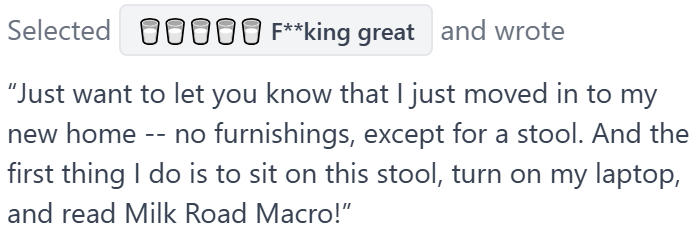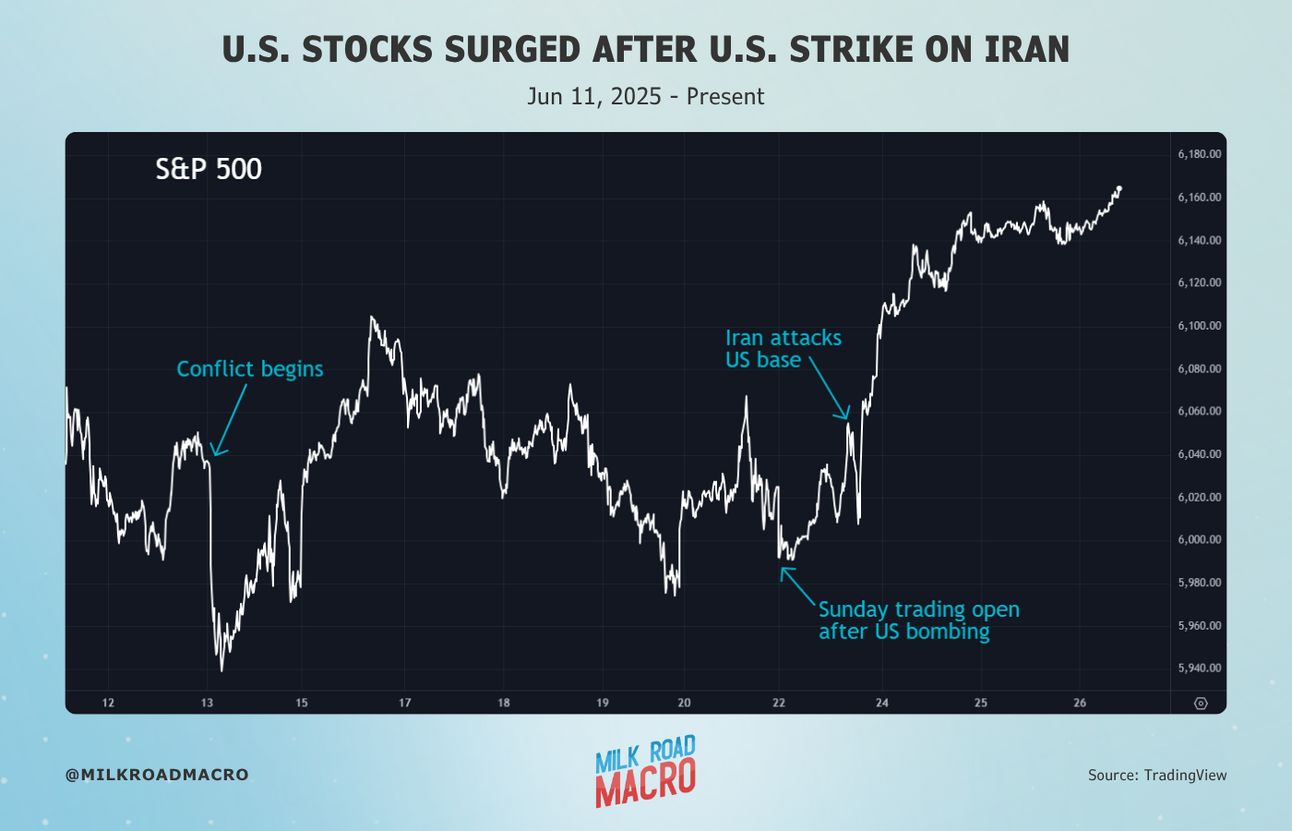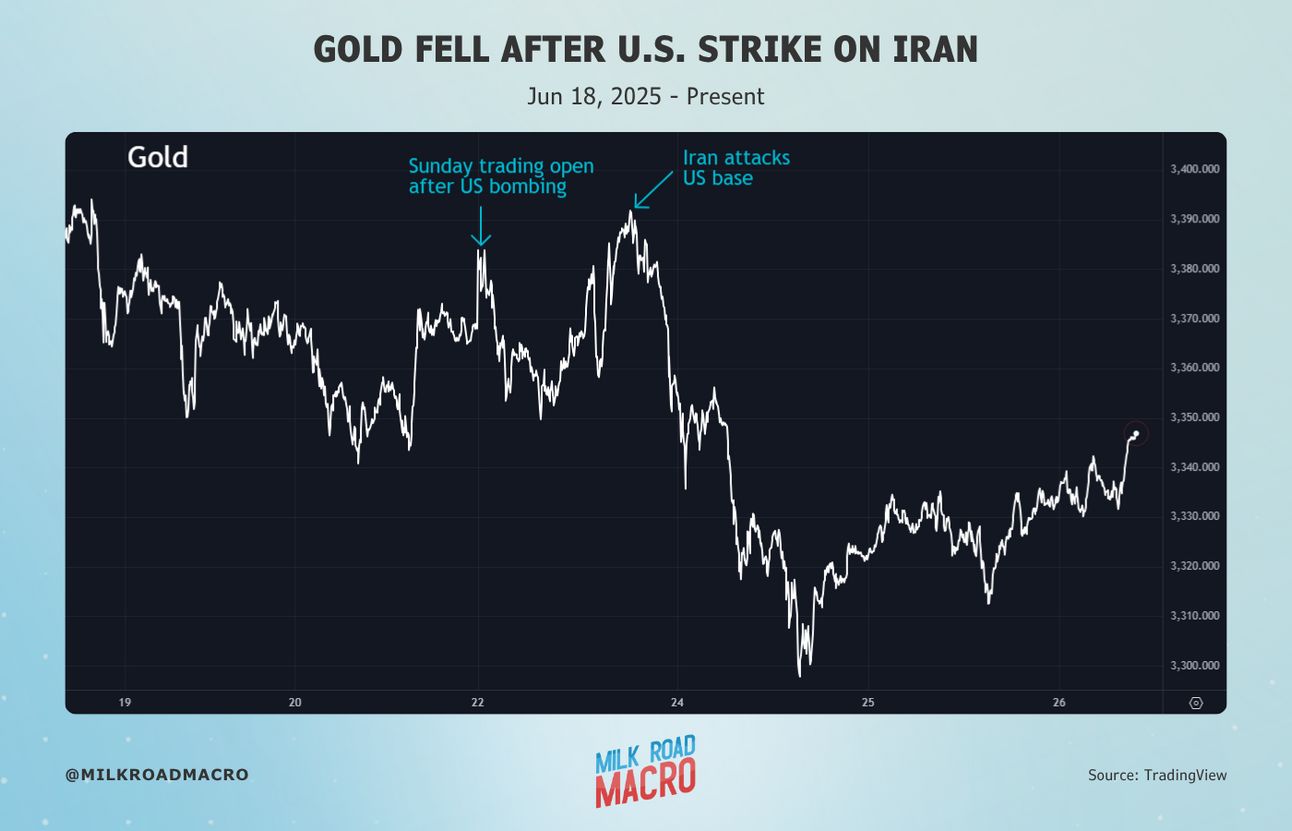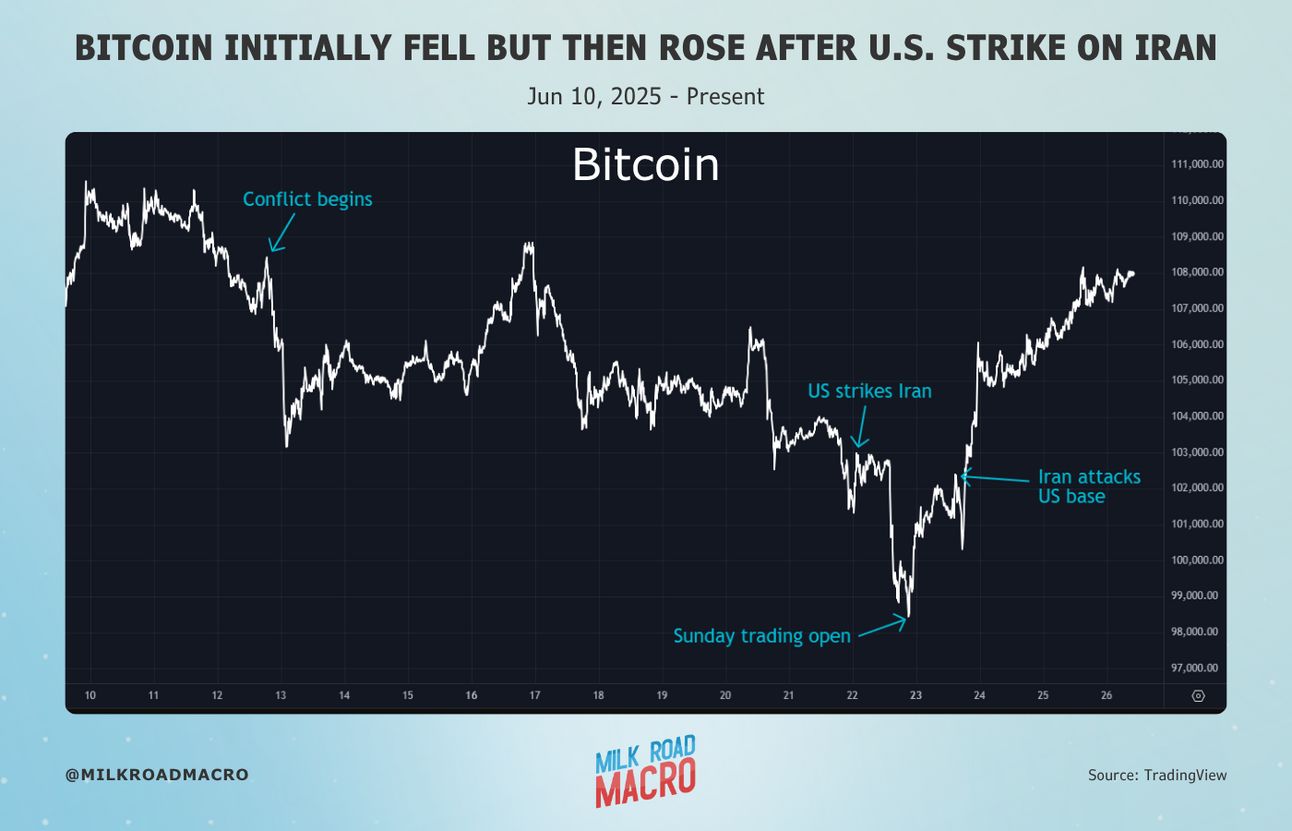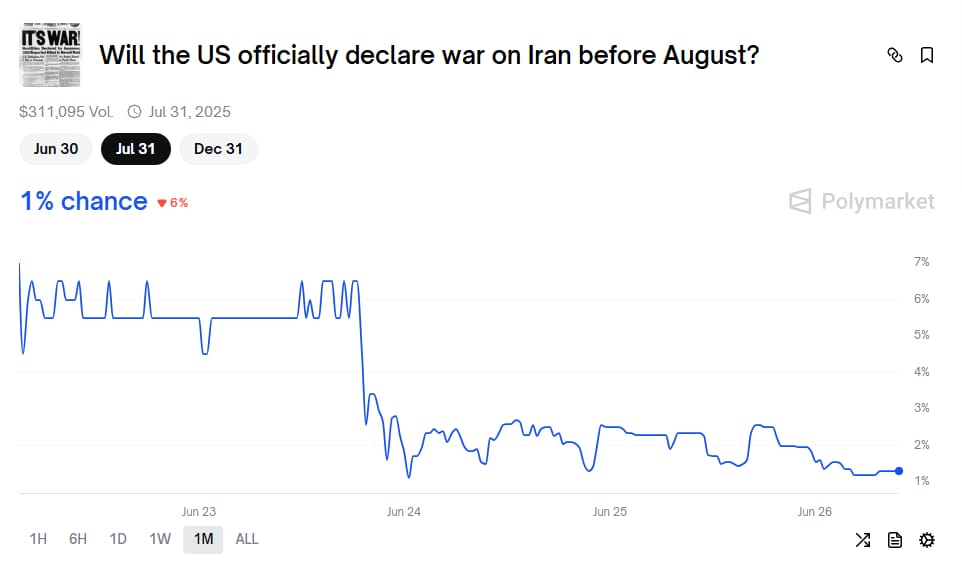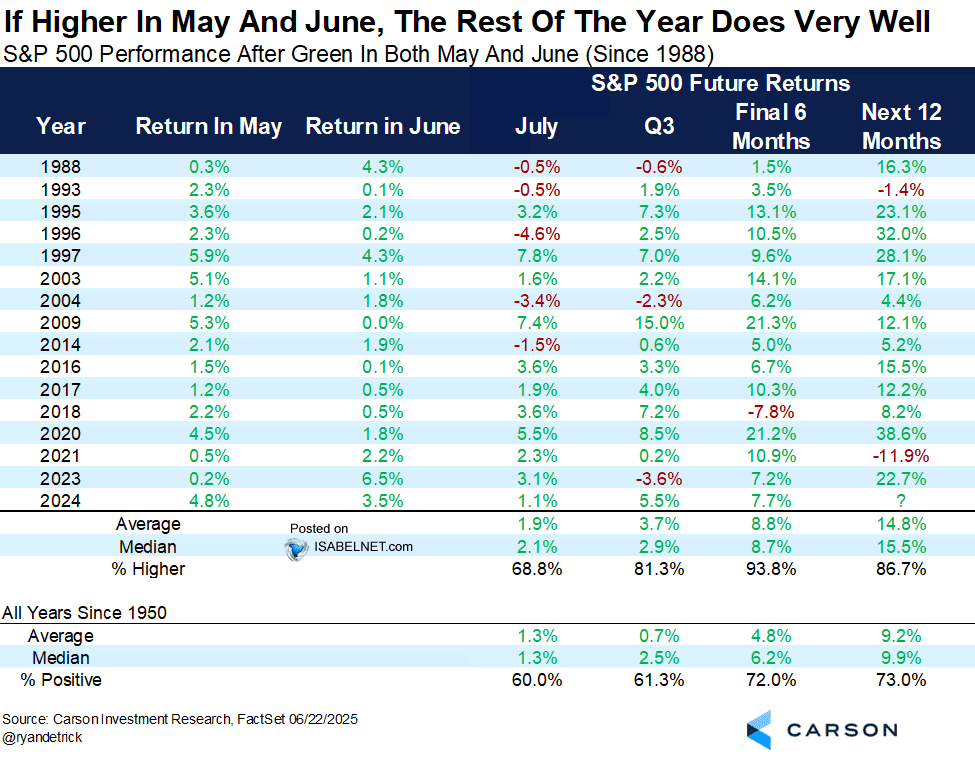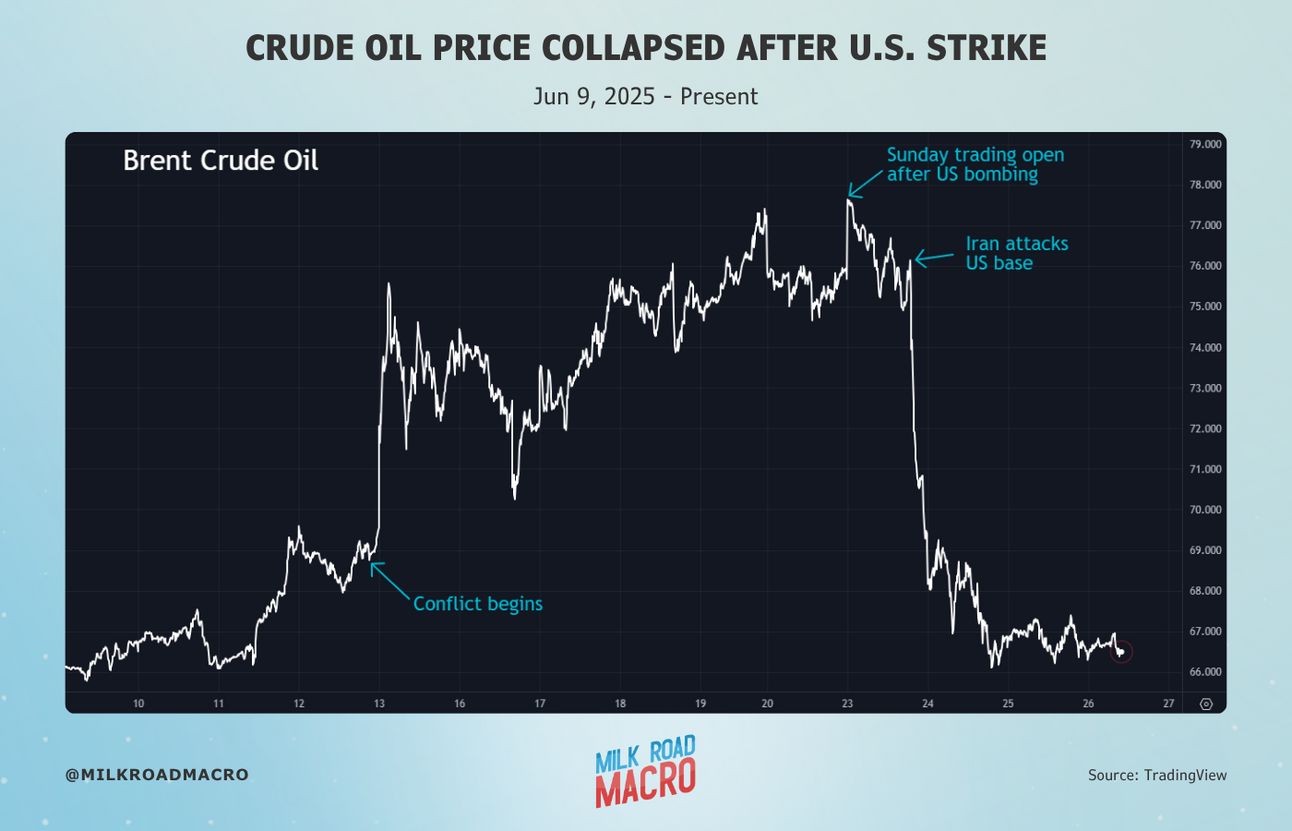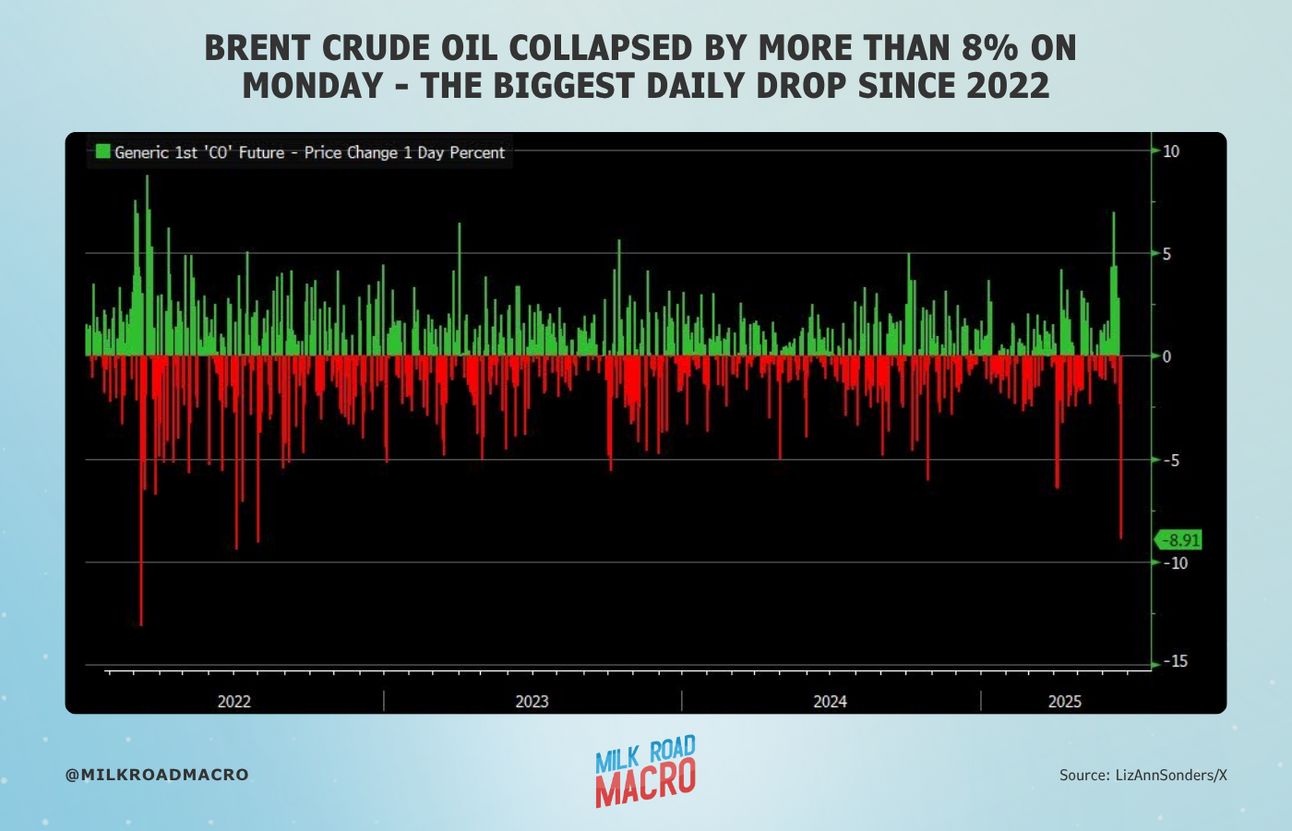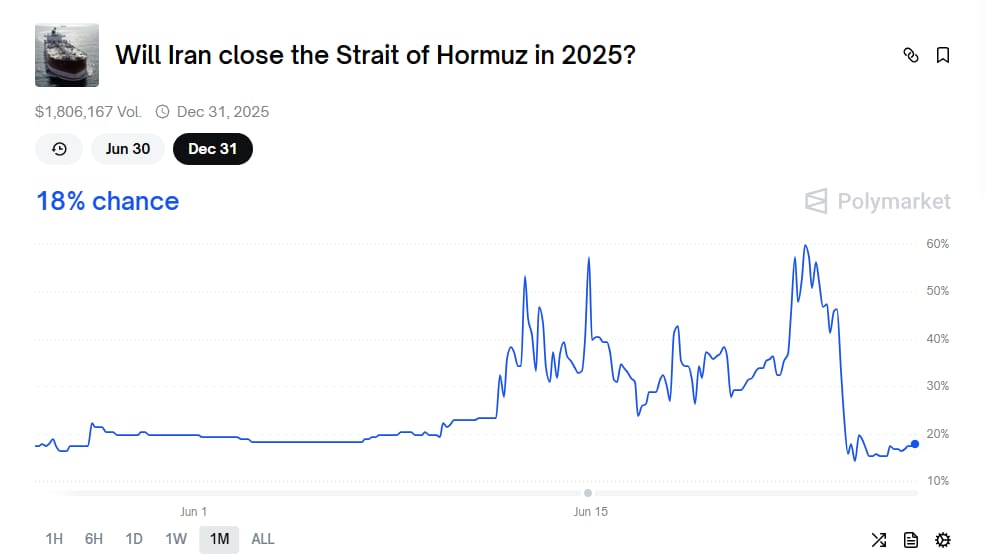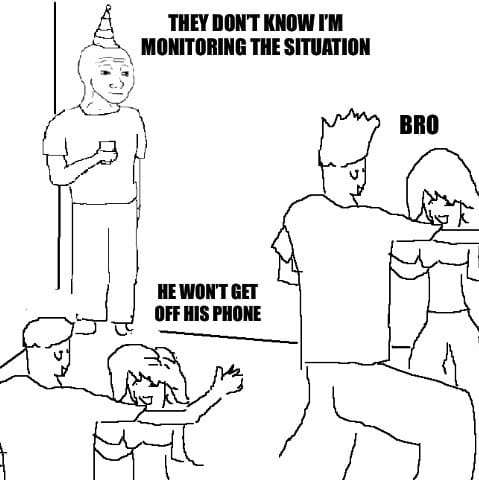- Milk Road Macro
- Posts
- 🥛 Is the worst of the Middle East war behind us? 🕵️
🥛 Is the worst of the Middle East war behind us? 🕵️
PLUS: Taking a look at market reactions to the conflict.

GM. This is Milk Road Macro, the newsletter that's more reassuring than seeing markets bounce back after a weekend scare.
Here’s what we got for you today:
✍️ US strike marks end of market panic
🎙️ The Milk Road Show: Are Trump’s Tariffs and Immigration Moves Fueling Growth or Disaster? w/ PDS
🍪 Donald Trump said American and Iranian officials will talk next week
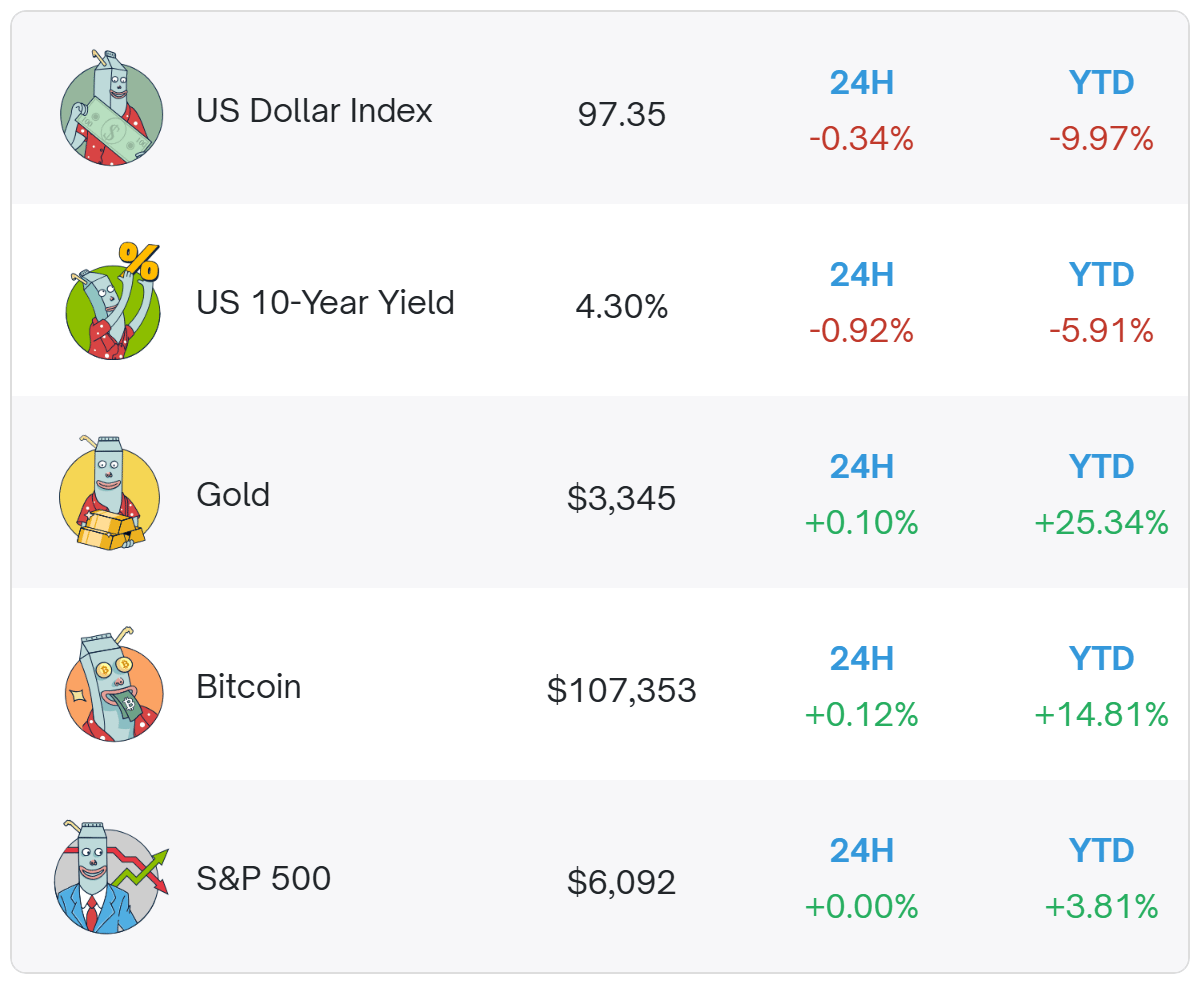
Prices as of 8:00 AM ET.

U.S. STRIKE MARKS END OF MARKET PANIC
The Middle East conflict has been top-of-mind for investors over recent weeks.
With news headlines shifting markets up and down.
The situation appeared to be escalating this weekend as the US launched a strike on Iran.
Iran then responded by attacking a US base in Qatar.
So, what’s the latest with the conflict?
How are financial markets reacting?
And what can we learn from market reactions?
Let’s take a look…
So, what’s the latest?
American stealth bombers targeted three Iranian underground uranium-enrichment sites on Saturday evening, dropping multiple “bunker buster” bombs.
Trump declared Iran’s underground nuclear sites had been “obliterated”.
Iran then launched a small counter-attack on a US military base in Qatar on Monday.
This consisted of 14 missiles.
It has since transpired that Iran gave both Qatar and the US early warning of the attack, and the incident resulted in no injuries and no damage caused.
It appears this Iran attack was essentially a “symbolic retaliation”.
The US, Iran and Israel then declared a ceasefire.
However, Israel has vowed to respond “forcefully” to any ceasefire violation, while the Iranian Islamic regime said it is fully prepared to respond against any new attacks.
Questions still remain over the whereabouts of Iran’s suspected 400kg stockpile of uranium enriched close to weapons grade levels, and to what extent Iran’s nuclear program has been damaged.
How did risk asset markets react?
As I outlined last week, geopolitical occurrences of this type typically follow a well-established pattern in the market.
When the first headlines hit, an initial “risk-off” environment emerges.
A “fear discount” is baked into risk assets like stocks and bitcoin, while a “flight-to-safety” bid typically comes in for gold and the US dollar.
But when the worst-case scenario is eliminated, these short-term dislocations typically resolve quickly.
Markets appear to have come to the conclusion that the US weekend strike was the “culmination” of the conflict.
The US bombing marked the exact bottom in US stock indices.
As soon as trading opened on Sunday evening, the S&P 500 started rising as the “fear discount” was removed.
And it hasn’t looked back since, surging further after the telegraphed small-scale Iranian response.
Gold also immediately began to fall at trading open on Sunday evening as the “flight-to-safety” flows were unwound.
Then gold plunged after the telegraphed small-scale Iranian response.
As the “weekend bellwether”, it’s interesting to note that bitcoin did actually fall in the hours after the US bombing throughout Sunday.
Although, it started rising strongly at the opening of traditional markets on Sunday evening.
Odds that the US will officially declare war on Iran before August have collapsed on Polymarket.
After being as high as 7% last week, they are now just 1.5%.
It feels as though the potential event risk of a US war with Iran has now been largely removed.
Removing these tail risks can often be a “clearing event” for markets, and markets are so far behaving as though this is what has happened.
The impressive “peace relief” bounce in US equities leaves the S&P 500 looking likely to close the month of June green.
That would mean a positive performance for both May and June this year.
This is historically a good signal for the rest of the year.
Since 1988, when the S&P 500 gained in both May and June - a rare bullish sign - the rest of the year rose 15 out of 16 times.
And what about oil?
Again, it’s the same picture with oil.
Brent Crude Oil surged when the conflict began, prompting fears over rising inflation globally.
But the weekend US bombing marked the exact top in the oil price.
As soon as trading opened on Sunday evening, crude oil started sliding.
Then, within seven minutes of the first Iranian missile launch towards the Qatar US base on Monday, the oil price began to plunge as the “geopolitical risk premium” that had been attached to the oil price was removed.
Within a few hours, Brent Crude Oil had collapsed by more than 8% - the sharpest daily drop in nearly three years.
“It’s all orchestrated”, an oil analyst told the Financial Times.
“I knew from June 18 that the base was empty, we have watched this movie before.”
Brent Crude Oil has now completely reversed all the gains it had made following the start of the conflict.
This is the market conclusively deciding that the war, or at least any “market disruptive aspects” of the war, is very likely over.
This is good news for global inflation.
Soaring oil prices would almost certainly have pushed inflation readings higher across the world.
There is still a small chance that Iran might close the Strait of Hormuz (I explained this last week).
If this occurs, it’s likely crude oil would surge to $100+.
But oil and gas have continued to flow unimpeded through the region throughout the recent fighting - and Iran has even increased its exports, according to energy consultancy Rystad.
Amrita Sen, founder of Energy Aspects, said: “Everyone was focused on the Strait being shot at. As soon as it became clear this was not going to happen, the risk premium [on the oil price] came off”.
Odds that Iran will close the Strait of Hormuz in 2025 on Polymarket have now collapsed from 60% to less than 20%, but I think even these odds may be too high.
Wrapping up
A tentative ceasefire is currently in place in the Middle East after what appears to have been a successful US operation at the weekend.
Markets appear to have concluded that this US strike was the “culmination” of the conflict.
And markets were further emboldened by the telegraphed small-scale Iranian response.
While a number of questions and concerns still linger, it’s likely that the negative market impacts of the conflict have ended.
That’s it for this edition - catch you for the next one.

ICYMI: Macro PRO is coming… 🧠
And this week is your chance to lock it in at 75% off.
We’re launching Macro PRO in August — a premium tier of this newsletter with long-form breakdowns, global economic forecasts, and the context you need to understand why markets move (not just when).
This will be part of our new PRO All Access Tier, which bundles together Macro PRO, Crypto PRO, Degen PRO and AI PRO for $100/month, $1000/year.
But, if you upgrade to Crypto PRO before July 1st, you’ll be automatically upgraded to PRO All Access at no extra cost.
That means:
You’ll start receiving exclusive PRO reports, portfolio updates, and signals from the Crypto team immediately
You’ll be first in line to receive Macro PRO content when it drops in August
You’ll unlock Degen PRO too when it launches July 14
And you’ll unlock AI PRO when it launches later in the year
All for just $25/month or $250/year — a 75% discount off the future price.
Zoom out. Think ahead. You’ll thank yourself later.

US President Donald Trump said American and Iranian officials will talk next week. “We may sign an agreement, I don’t know”, he said.
Trump reportedly may announce a replacement for Fed Chair Jerome Powell by September. The dollar fell on speculation that US rate cuts may come sooner and go further than expected.
The Federal Reserve has adopted a draft proposal to modify the Supplementary Leverage Ratio applied to large US banks. We covered this and why it might be important for markets earlier this week.

MILKY MEME 🤣

RATE TODAY’S EDITION
What'd you think of today's edition? |
ROADIE REVIEW OF THE DAY 🥛
